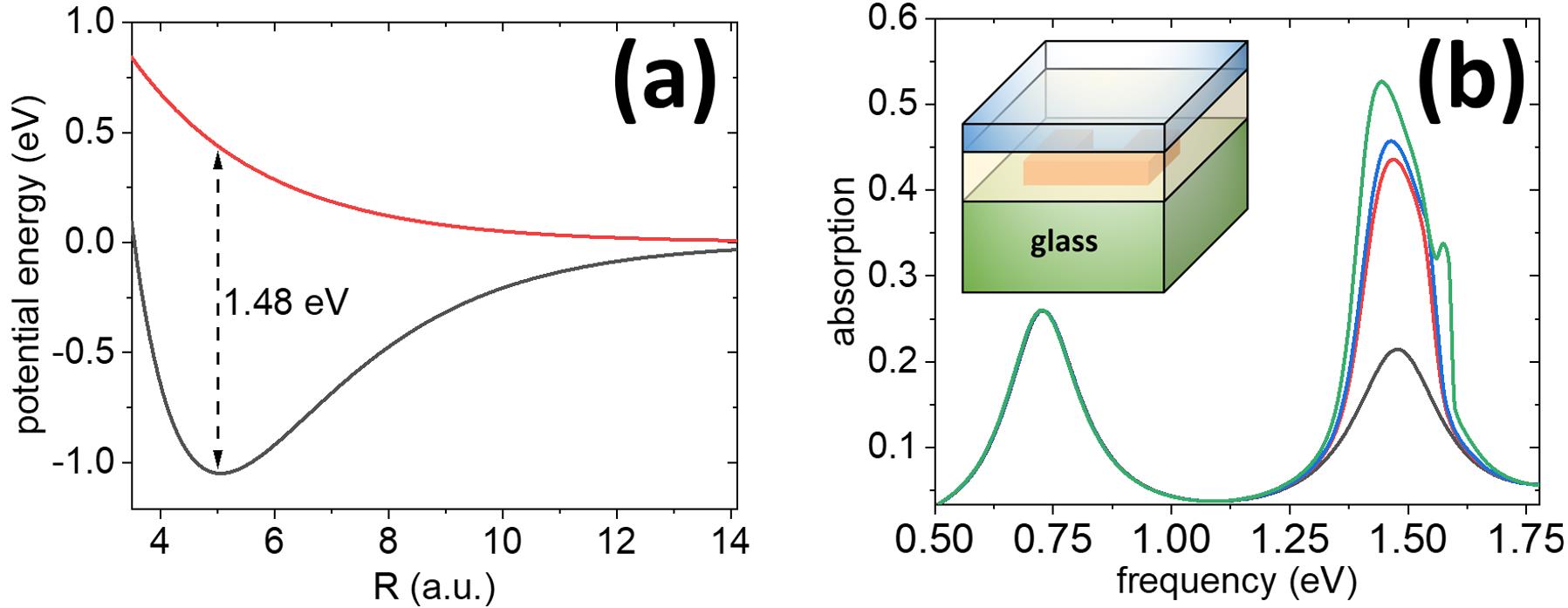



Computational Optics Group
exploring the enigmatic reality: unveiling the fusion of classical and quantum worlds in nanoscale light-matter interactions

COLLABORATIONS
EXPERIMENTS
Adi Salomon [Bar-Ilan University]
Tal Schwartz [Tel Aviv University]
Isabelle Ledoux [LPQM]
Tal Schwartz [Tel Aviv University]
Isabelle Ledoux [LPQM]
THEORY
Abraham Nitzan [UPenn, Tel Aviv University]
Joseph Zyss [Ecole Normale Supérieure Paris Saclay]
Andrei Piryatinski [LANL]
Joseph Subotnik [UPenn]
Yonatan Sivan [BGU]
Joseph Zyss [Ecole Normale Supérieure Paris Saclay]
Andrei Piryatinski [LANL]
Joseph Subotnik [UPenn]
Yonatan Sivan [BGU]
FUNDING


RESEARCH HIGHLIGHTS
New numerical tool for integrating Maxwell-Schrödinger equations in three dimensions on supercomputers
New parallelization approach to simulate optical properties of ensembles of quantum emitters in realistic electromagnetic environments is proposed. It relies on balancing computing load of utilized processors and is built into three-dimensional domain decomposition methodology. Proposed approach enables directly accessing dynamics of collective effects as a number of molecules in simulations can be drastically increased. Numerical experiments measuring speedup factors demonstrate the efficiency of the proposed methodology. As an example, we consider dynamics of nearly 700,000 diatomic molecules with ro-vibrational degrees of freedom explicitly accounted for coupled to electromagnetic radiation crafted by periodic arrays of split-ring resonators and triangular nanoholes. As an application of the approach, dissociation dynamics under strong coupling conditions is scrutinized. It is demonstrated that the dissociation rates are significantly affected near polaritonic frequencies.

Molecular plasmonics simulations. Panel (a) shows two electronic potential energy surfaces as functions of the internuclear distance. Vertical dashed line shows the value of the vertical gap, which is set to match the localized SPPR of the plasmonic system. The geometry of simulations is depicted in the inset of panel (b), where the molecular layer shown in blue is placed on top of the PVA layer covering SRRs. The main panel (b) shows absorption as a function of the incident frequency without molecules (black) and with molecules at different molecular concentrations: (red) 8×1025 m-3, (blue) 1026 m-3, and (green) 2×1026 m-3.

Collective dissociation dynamics at plasmonic interfaces. The inset in panel (a) shows a periodic array of triangular holes in 350 nm thin Au film on a glass substrate (refractive index is 1.52). The system is periodic along X and Y with a period of 350 nm. The triangular hole is in a shape of an equilateral triangle with a side of 230 nm. Molecular layer is placed on top of the metal film and is 18 nm thick.
Panel (a) shows absorption as a function of frequency for the array without molecules (black line) and with molecules (red line) Panel (b) shows an ensemble average internuclear distance calculated using Eq. (8) for molecules in vacuum (black line) and on the metal film (red line). Vertical blue dashed lines show polaritonic frequencies.
Total number of molecules is 691,200
Total number of processors used 1536
Codes combine EM dynamics at plasmonic interfaces with quantum dynamics of molecules with ro-vibrational degrees of freedom
Total number of processors used 1536
Codes combine EM dynamics at plasmonic interfaces with quantum dynamics of molecules with ro-vibrational degrees of freedom
NUMERICAL TOOLS AND CODES - NEW PART OF OUR WEB-SITE
Home-built numerical tools and codes
A new page on our web-site: Numerical Tools

Diagram illustrating numerical tools developed in our group
Presently the new page contains a list of developed methodologies and descriptions of various tools that we utilize in our research. Utlimately once we secure the funding this page is going to become a hub for openly distributing all our home-buil codes.
Meanwhile, feel free to drop Maxim Sukharev a line indicating your potential interest in obtaining any of our codes. When sending an inquiry, please, include your name, affiliation, and which algorithm/code/tool you are interested in. We are collecting this information for statistical purposes and also to include it in our future proposals.
Meanwhile, feel free to drop Maxim Sukharev a line indicating your potential interest in obtaining any of our codes. When sending an inquiry, please, include your name, affiliation, and which algorithm/code/tool you are interested in. We are collecting this information for statistical purposes and also to include it in our future proposals.



